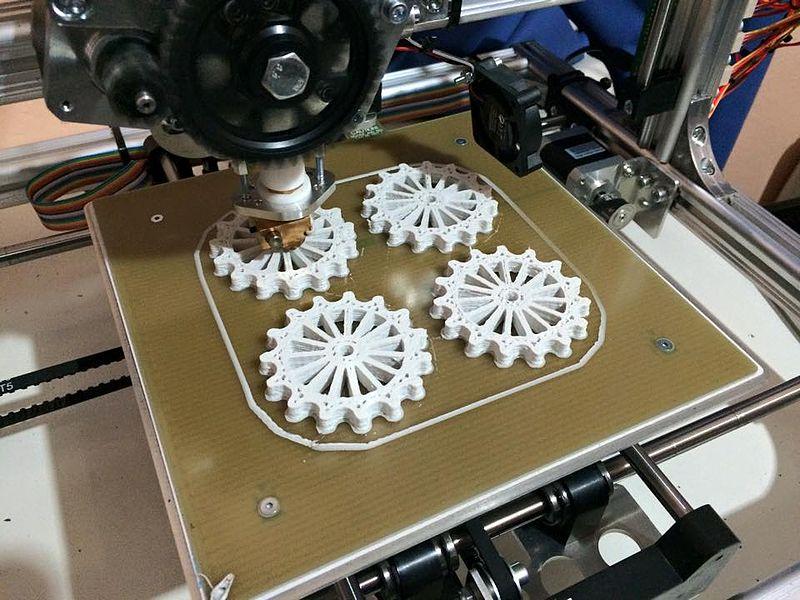A Journey Into the World of 3-D Printing
From digital to physical
Photo via Wikimedia Commons under Creative Commons license.
Printing Robot Continuous Tracks
Technology plays a fundamental role in today’s advanced society. Our world is revolutionized as new technological devices are fabricated by brilliant scientists and engineers. Many have heard about the 3-D printers that have been developed, evolving the concept of traditional 2-D printing. The 3-D printer is a phenomenal and evolving technological device that has the capability to radically transform people’s lives, but is this invention worth the inconveniences it carries?
Before answering this question: it is important to understand how a 3-D printer works. 3-D printed objects actually start out as virtual blueprints that can be created using a computer aided design file. People can scan an object that already exists or design their very own innovative gadget, and make their imagination come to life. 3-D modeling software then divides the virtual object into several horizontal layers, and this image is uploaded into a 3-D printer. The printer combines the slices together, and produces the requested 3-D solid item.
Many different industries in society require today’s most advanced technological devices in order to assist people in the most efficient way, and 3-D printers could be the ideal tool for such jobs. These machines accept the input of a wide range of materials, ranging from certain types of plastic and glass to silver and steel. The variety of objects that can be created is innumerable! These will enable medical, automotive, aerospace, food, and manufacturing industries to advance, prosper, and accomplish several goals. There have already been advances in the medical field.
According to CNN, a biotech firm known as Organovo is ready to begin selling 3D printed liver tissue, and Michael Renard, the executive vice president at Organovo said that 3-D printed tissues could be used to replace small organs or parts in the body within the next few years. 3-D printers also give hope to the food industry, as well as people in charge of cooking at home. The Foodini is a 3-D food printer that can prepare foods, such as burgers, pizza, chocolate, pasta, and many more. All one needs to do is load the ingredients into food capsules, insert the capsules into the printer, and wait for a delicious dish to be created. Some advantages for manufacturing companies include the ability to customize their products and quickly manufacture objects for a cheap price. This form of manufacturing also produces little to no waste, as this printer only uses the materials that are needed to construct the product, instead of starting out with a big piece of a certain material and wasting a lot of materials in the process of sculpting.
Despite their remarkable features, almost all technological devices come with drawbacks. During an interview in 2014 with CNN, the brilliant inventor of the 3-D printer, Chuck Hull, explained that the limits to 3-D printing include its speed, the printing material’s properties, and the amount of items. However, he assured his interviewers that these limits will probably be overcome within the next couple of years. Other disadvantages include the chance of more copyrighted items being printed and the objects that are able to be printed being limited size-wise. The incorporation of 3-D printers into manufacturing companies could also decrease the number of manufacturing jobs available to people, which could hurt the economies of countries that lead in the production of goods. It’s hard to believe, but 3-D printing could even be quite dangerous in the future, considering a 3-D printed gun was created through the use of these devices.
3-D printers are exceptional devices that could drastically improve the lives of many people. However, it is essential for people to conduct keen research before investing in such an item. It is also vital for everybody to use the device properly for the benefit of all. With their amazing powers, 3-D printers will soon be utilized to solve every day challenges, as well as complicated problems in the world.

Nivetha is a member of the Class of 2018. After contributing "A Journey into the World of 3-D Printing" during her freshman year, she joined the staff...


